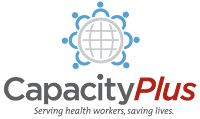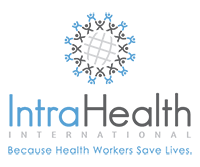HIV/AIDS
Mapping of Community Home-Based Care Services in Five Regions of the Tanzania Mainland
The study documents the concerns of [People Living with AIDS] PLWHA, Community Health Workers (CHWs), primary care providers, and other stakeholders to inform Pathfinder’s support to national efforts to scale-up [Community Home-Based Care] CHBC. The proposed project aims to replicate Pathfinder’s successful CHBC model for PLWHA in other areas and improve access to HBC for more Tanzanians. [author’s description]
- 1989 reads
Engaging Local Non-Governmental Organizations (NGOs) in the Response to HIV/AIDS
During the past few years, a number of key donor programs have scaled up their global response to the crisis of HIV and AIDS… The goal of this paper is to begin a discussion among donors, international and local NGOs, and multilateral and U.S. government representatives on how to effectively engage indigenous partners and transfer much-needed resources. [from preface]
- 4288 reads
Integrating TB and HIV Care in Mozambique: Lessons from an HIV Clinic in Beira
In Mozambique, [Health Alliance International] HAI has been working closely with the MOH for more than fifteen years to support the development and implementation of MOH programs in reproductive health, the response to HIV/AIDS, and malaria control… HAI works with the MOH to implement the nationally designed model of HIV care, and has supported the implementation of voluntary counseling and testing centers, prevention of mother-to-child transmission of HIV (PMTCT) PROGRAMS, and HIV treatment centers integrated into this public sector model of care. [publisher’s description]
- 2739 reads
Human and Financial Resource Requirements for Scaling Up HIV/AIDS Services in Ethiopia
Ethiopia is currently one of the countries most seriously affected by HIV/AIDS, with the sixth highest number of infections in the world. This paper discusses how to combat this epidemic. As the country scales up HIV/AIDS services, increased attention is focused on identifying constraints to program expansion. One of the most important constraints is that of human resources. [from publisher’s abstract]
- 3382 reads
Tools for Planning and Developing Human Resources for HIV/AIDS and Other Health Services
The tools and guidelines collected in this book will assist health program managers, policymakers, and leaders to assess the impact of HIV/AIDS on the health workforce and its capacity to deliver and scale up HIV/AIDS services. The book provides materials to help decision-makers develop a strategy to mitigate the impact of HIV/AIDS, for both a short-term emergency response and a longer-term plan to strengthen HRM systems. This compilation also includes a tool developed by the World Health Organization to help HIV/AIDS programs to achieve a more sustainable workforce appropriately trained to provide ART.
- 4135 reads
Involving Young People in the Care and Support of People Living with HIV/AIDS in Zambia
Horizons, in collaboration with CARE International and Family Health Trust, conducted a quasiexperimental intervention study to determine which care and support needs of people living with HIV and AIDS and their families could be met by trained youth, and to establish whether youth engaged in formalized care and support activities would increase their adoption of protective behaviors or reduce the stigma faced by members of AIDS-affected households.
The study was conducted in semi-urban and rural communities in two provinces of northern Zambia located 700 to 1,000 kilometers from Lusaka.
- 5134 reads
Impact of HIV/AIDS on the Health Sector: National Survey of Health Personnel, Ambulatory and Hospitalised Patients and Health Facilities 2002
This report emanates from the results of a study that examined the impact of HIV/AIDS on the public and private health facilities in South Africa, and outlines the subsystems that are affected. Both public and private sector health facilities have reported an increase in the number of patients seeking clinical care for people living with HIV/AIDS, leading to increased admissions to medical and pediatric wards and increased workloads. This study addresses these issues and makes recommendations for managing the HIV/AIDS case load. [from author]
- 1698 reads
Human Resource Management (HRM) Rapid Assessment Tool for HIV/AIDS Environments: A Guide for Strengthening HRM Systems
The HRM-HIV Tool provides organizations with a participatory, rapid assessment tool for identifying an organization’s human resource management status and making concrete plans for improvements within HIV/AIDS environments. It has been used with both public and private organizations in Ghana, Kenya, Nigeria, and Tanzania. The tool conforms to principles of participation and self-determination that guide all of MSH’s training and technical assistance activities. [author’s description]
- 4056 reads
Human Capacity-Building Plan for Scaling Up HIV/AIDS Treatment
The human capacity-building plan proposes a set of products and services supporting countries in their efforts to plan for, train and sustain the human capacity to achieve 3 by 5.
- 1535 reads
Human Resources for Health Exist in Communities
This paper describes three examples of human resource development in community-driven HIV/AIDS programmes. The basic proposition is that acknowledgement, inclusion of and support for community based health initiatives is necessary to understand fully where health action is occurring and where potential for expansion lies. The paper calls for an expanded definition of health systems encompassing work being carried out by communities who are at the frontline in responding to the HIV/AIDS epidemic. Health care workers live in communities, and communities are providing health care.
- 6185 reads
Strengthening Health Systems to Improve HIV/AIDS Programs in the Europe and Eurasia Region Using Global Fund Resources
Countries in the Europe and Eurasia region are facing a significant and expanding HIV/AIDS epidemic that is largely concentrated among particularly vulnerable populations. A window of opportunity exists to respond effectively to the epidemic and to halt its spread, both within and beyond vulnerable populations. However, available evidence indicates that this opportunity is being missed. One explanation for this is that significant barriers exist within the region’s health systems that prevent rapid scale–up of effective HIV/AIDS programs.
This study seeks to examine these barriers and ways they can be overcome.
- 10462 reads
Health Systems Strengthening and HIV/AIDS: Annotated Bibliography and Resources
Over the past few years, a united battle against HIV/AIDS has gained momentum worldwide. Non-governmental and community-based programs, national and international organizations—all are confronting the myriad of challenges posed by the HIV/AIDS pandemic. In an effort to provide policymakers, technical personnel, and other stakeholders comprehensive information on the costs of interventions and the impact of HIV/AIDS on health systems, PHRplus has prepared this annotated bibliography. The documents described focus on those aspects of the pandemic most related to the work of the project issues of economic impact, financing and resource allocation, costing, health system strengthening, scaling up antiretroviral therapy, surveillance systems, and program monitoring and evaluation.
- 2456 reads
Human Capital and the HIV Epidemic in Sub-Saharan Africa
The overall objective of this paper is to provide some insights into the effects of the HIV epidemic on human capital in sub-Saharan Africa through a discussion of some of the factors that are operating. It is not intended as a compendium of data on the problem but aims instead to provide an analytical framework for understanding the policy and programming issues. There is an analysis of the impact on the public services in Malawi, a detailed presentation of the impact on education and health and a discussion of issues relating to the measurement of the impact on different productive sectors and the role of different social partners in adjusting to, and managing, the impact.
- 2290 reads
Attitudes of Nursing Students of Kolkata Toward Caring for HIV/AIDS Patients
This study examines the attitudes of nursing students toward caring for HIV/AIDS patients and their knowledge and perceptions about the disease. Findings revealed a very positive outlook of the nursing students in regards to caring for HIV/AIDS patients. Although most of them expressed their willingness to take any job offer concerning caring for HIV/AIDS patients, 34.3% apprehended resistance from their family members in this regard. However, they also considered that it would be possible for them to overcome the resistance. Although 100% of the students had heard of HIV/AIDS, a number of them had misconceptions about various aspects of the disease.
- 7325 reads
Impact of HIV/AIDS on the Health Sector in Sub-Saharan Africa: The Issue of Human Resources
This paper reviews data, studies, and other information on HIV/AIDS impacts on human resources in sub-Saharan Africa. The purpose is to guide the development of an instrument to conduct HIV/AIDS human resource assessments in the health sector. Until now, inadequate attention has been devoted to this critical step in responding to the epidemic. Such assessments can assist policy makers and advocacy groups to shape and accelerate the implementation of national HIV/AIDS policies and programs throughout the continent. [Description from author]
- 2381 reads
HIV/AIDS and Human Resources
We are beginning to recognize that, parallel to biological action, the HIV/AIDS pandemic also attacks the human capacity and social defence systems. By destroying the fabric of health systems, the spread and impact of the epidemic is hugely augmented. [author’s description]
- 2106 reads
Responding to HIV/AIDS in Africa: A Comparative Analysis of Responses to the Abuja Declaration in Kenya, Malawi, Nigeria and Zimbabwe
The challenge of tackling HIV/AIDS was taken up by African Heads of State at their summit in Abuja in 2001. This led to the Abuja Declaration, the primary goal of which is to reverse the accelerating rate of HIV infection, TB and other related infectious diseases.
This report is based on research carried out by ActionAid International in Kenya, Malawi, Nigeria and Zimbabwe and provides a comparative analysis of the achievements and challenges faced by these four African countries in relation to the Declaration. [Adapted from author]
- 2399 reads
Uganda Leads the Way in Innovative HIV/AIDS Treatment
This news article introduces an approach to HIV/AIDS treatment that has helped Uganda scale up treatment in the midst of limited health workers. The approach, called Integrated Management of Adult and Adolescent Illness (IMAI), has been inspired by successes in Latin America, the former Soviet Union and Africa, where lay health workers who are often relatives, friends or other community volunteers have been trained to help treat tuberculosis patients in poor settings. [adapted from author]
- 1715 reads
Costs of HIV/AIDS Among Professional Staff in the Zambian Public Health Sector
Despite their high level of training and medical knowledge, health professionals remain a population that is vulnerable to HIV/AIDS. AIDS-related mortality has been recognized as a significant factor in the loss of trained health staff in high prevalence countries, but little empirical research has been done to quantify the damage. In this study, we applied a case/comparison methodology to estimate the costs of HIV infection in the professional workforce at three Zambian healthcare institutions: Lusaka District Health Management Team, University Teaching Hospital (the national tertiary care hospital) and Kasama District Hospital and Health Management Team. Deaths or medical retirements among professional staff were analyzed wherever the complete personnel records were available, with the exclusion of cases resulting from violence, accident or disease of sudden onset. 108 cases were identified over a three-year period ending in October 2003. Each case was matched with two comparisons of similar age, sex and professional training. Data were collected for both cases and comparisons on absenteeism, compensation and medical care and reimbursement. Data were also collected on death and retirement benefits paid, or owed, to the cases. [author’s description]
- 1970 reads
Impact of HIV/AIDS on Health Systems and the Health Workforce in Sub-Saharan Africa
The purpose of this paper is to advocate for and guide planners in the collection and use of appropriate information to develop and manage the health workforce in a manner that enables health systems to respond to the service demands created or worsened by HIV/AIDS. The paper also intends to guide the development of tools for assessing impacts of HIV/AIDS on the health sector. Such tools can assist policymakers, planners, and advocacy groups to shape and accelerate the implementation of national HIV/AIDS policies and programs throughout the continent. [Description from author]
- 2894 reads
Challenges Facing the Malawian Health Workforce in the Era of HIV/AIDS
What effect does the increased number of Malawians living with HIV/AIDS have on the public health sector? To address this question, the Commonwealth Regional Health Community Secretariat (CRHCS) and Malawian researchers from the Ministry of Health and Population (MoHP), with support from the U.S. Agency for International Development, Bureau for Africa, undertook an assessment to explore the effects of HIV/AIDS on the health workforce. [author’s description]
- 4802 reads
HIV/AIDS, Human Resources and Sustainable Development
This report, written for the World Summit on Sustainable Development, Johannesburg 2002, discusses the impact of HIV on the workforce and calls for governments to live up to the benchmark of action agreed to in the 2001 Declaration of Commitment to HIV/AIDS.
- 1979 reads
HIV/AIDS and the Workforce Crisis in Health in Africa: Issues for Discussion
This paper summarizes the key issues confronting human resources (HR) in the health sector in sub-Saharan Africa and the role that HIV/AIDS has played in exacerbating this crisis. Section I reviews the causes and consequences of this crisis. Section II focuses on the effects of the HIV/AIDS epidemic on the crisis. Section III analyzes the constraints faced by recent health initiatives in addressing HR issues. Finally, Section IV provides recommendations on how donors and other partners can address HR issues in a more intensive, sustained, and concerted manner. [summary]
- 1814 reads
Joint ILO/WHO Guidelines on Health Services and HIV/AIDS
The ILO and the WHO decided to join forces in order to assist health services in building their capacities to provide their workers with a safe, healthy and decent working environment, as the most effective way both to reduce transmission of HIV and other blood-borne pathogens and to improve the delivery of care to patients.
- 7309 reads
HIV/AIDS, Equity and Health Sector Personnel in Southern Africa
This paper discusses the implications for health personnel of the HIV epidemic, and health sector responses to it, in southern Africa, using Malawi as a case study. Published and grey literature has been consulted to assess the situation and its implications for equity. [author’s description]
- 7632 reads
Healers Abroad: Americans Responding to the Human Resource Crisis in HIV/AIDS
This report explores potential strategies for mobilizing U.S. health personnel and technical experts to assist in the battle against HIV/AIDS in 15 African, Caribbean, and Southeast Asian countries highly affected by the disease. Commissioned by the U.S. Department of State as part of a historic global health initiative—the President’s Emergency Plan for AIDS Relief (PEPFAR)—the report presents the results of a study conducted by the Institute of Medicine’s Committee on the Options for Overseas Placement of U.S. Health Professionals. [Description from author]
Note: Online book
- 2396 reads




